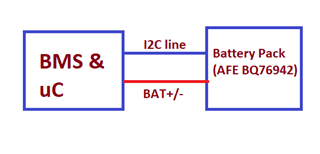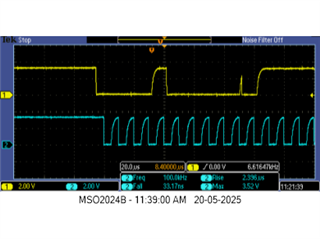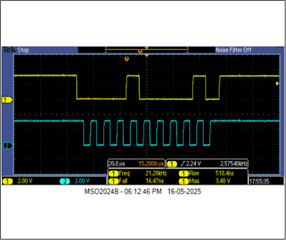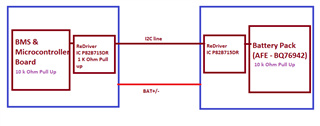Tool/software:
Hi,
I am Using the BQ76942 for the 5P4S Lithium -ion Battery pack configuration.
In my architecture the BMS and the battery pack is in separate boards, and We are connecting using the Cable Harness to interface the same.

The MCU of the BMS is communicating with Battery Pack of BQ76942 (AFE) over I2C communication. For the Pull-up i have choose the 10K ohm Resistor over 3.3V supply on SCL and SDA.
some how the line capacitance is larger the I2C waveform are have sawtooth like shape. As shown in below image.
Image1 of 10Kohm Pull-up Resistor
To Improve I have increased the Pull up Value to 4.7Kohm in BMS board, without connecting to Battery Pack (BQ79942 - AFE Board). The Improved waveform overserved.
But once I have connected the Battery Pack (BQ76942 -AFE Board), The SDA line goes pull low and communication is not happening.
Image2 of 4.7 Kohm Pull-up Resistor

To resolve the above pull-up value related issue and reliable board to board communication, I have used line driver in P82B715DR in both the board.
Not communicating, and pull low the SDA if 1 Kohm Resistor pull up is available.
once remove the 1 K ohm intermediate redriver pull only then start working, but with image1 waveform (Sawtooth like signal).
Image of 10kohm (BMS) - 1 Kohm (Redriver Imtermidiate) - 10kohm (AFE Board) Pull-up Resistor

Suggest how to improve the reliable communication.

